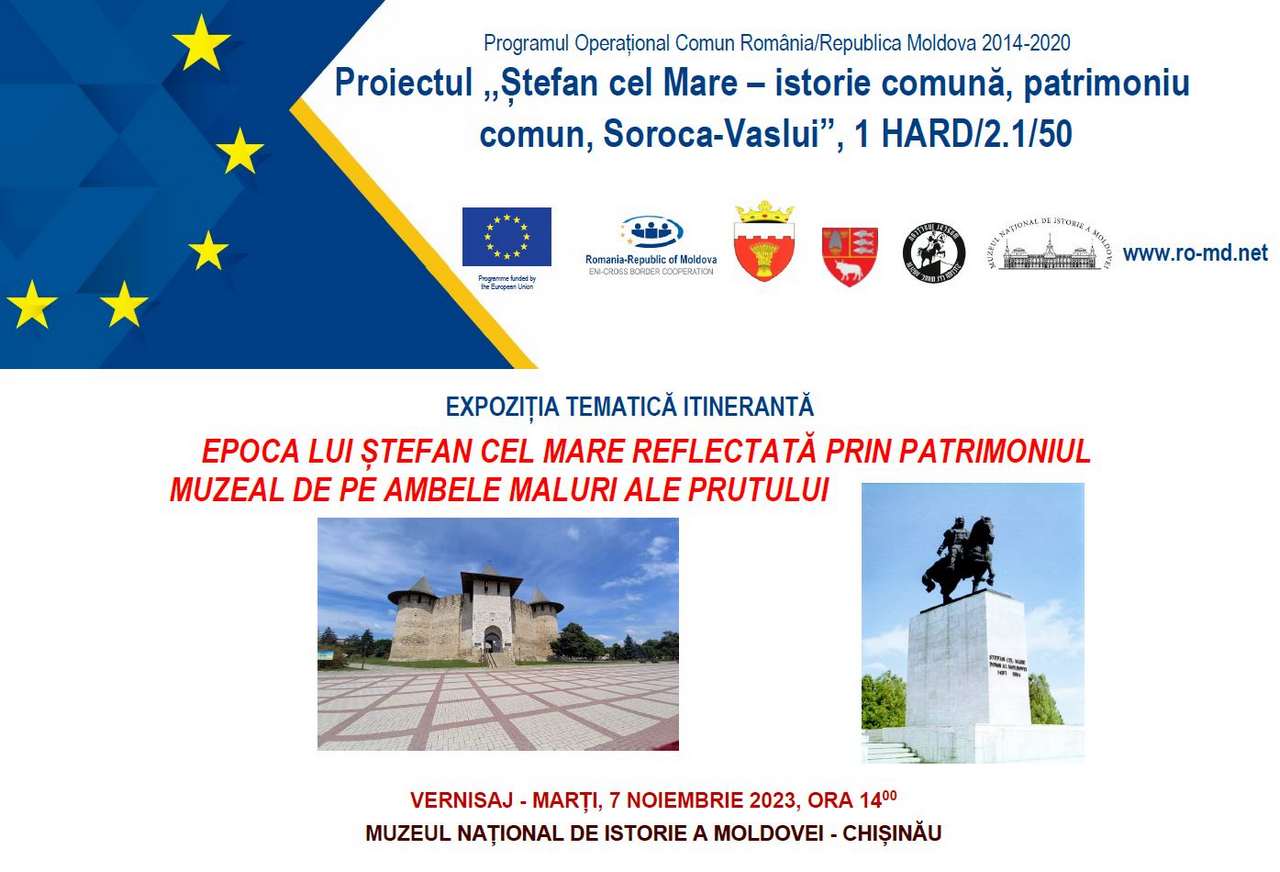 Voivode Stephen the Great of Moldavia occupies a place of honor in world history, not only for his excellent qualities as a statesman, diplomat and military leader, but also for the fervor with which he defended Christianity. He understood then that the real power of Moldova is not given by the extent of the land nor by the abundance of its resources, but by work, moral principles and the seriousness with which a people shapes its destiny. Thus, he managed to make his country an important state power in the southeastern area of medieval Europe. That is why the era of Stephen the Great (1457-1504) represented the most fruitful period in the existence of the medieval Moldavian state, with an unprecedented political, economic, social and cultural-artistic development on both banks of the Prut.
Voivode Stephen the Great of Moldavia occupies a place of honor in world history, not only for his excellent qualities as a statesman, diplomat and military leader, but also for the fervor with which he defended Christianity. He understood then that the real power of Moldova is not given by the extent of the land nor by the abundance of its resources, but by work, moral principles and the seriousness with which a people shapes its destiny. Thus, he managed to make his country an important state power in the southeastern area of medieval Europe. That is why the era of Stephen the Great (1457-1504) represented the most fruitful period in the existence of the medieval Moldavian state, with an unprecedented political, economic, social and cultural-artistic development on both banks of the Prut.
At the same time, Stephen the Great strictly applied the clear principle that shows that "if you don't know how to build, don't tear down!", and his concrete work of dignity, wisdom, bravery and brilliant clairvoyance fully demonstrated this. It was a unique and extremely beneficial work for the country of Moldova. The great gentleman always paid due attention to the development of trade, crafts and the welfare of his people and was a true "country builder". He built fortresses and princely courts from Hotin, Soroca, Orhei to Cetatea Albă and Chilia, from Suceava, Botoșani, Iași to Neamţ, Roman and Bacău, from Iaşi and Vaslui to Bârlad and Berheci, but - more chosen - he founded the wonderful array of churches and monasteries, those real "burning candles and vigil lights and spiritual strength" from Voroneț, Humor, Putna, Suceava, Popăuți-Botoşani, Pătrăuți, Bălineşti, Arbore, Căpriana, Neamț, Războieni, Bacău, Borzești, Trotuș, Iasi, Hârlau, Dobrovăț, Vaslui, Huși and Bârlad. Thus, in an era of creative syntheses, Stefanian art and culture combined the wisdom of the word with the beauty of the image. A calm and luminous art, at the same time, in which the Orthodox faith and the specifically medieval life were twinned. The beauty of the art of Ştefan's era represents itself even now, simple and grand, enthroning mysteriously over time.
In this broad context, the "Ștefan cel Mare" Vaslui County Museum - as part of the "Ștefan cel Mare - common history, common heritage, Soroca-Vaslui" Project and having as partners the Soroca District Council and the Vaslui County Council - organizes together with the Museum National Museum of the History of Moldova in Chisinau, a traveling thematic exhibition that includes replica objects of the Stefanian heritage that it owns.
Although today there are few objects that are directly related to the person of Ştefan-Vodă and his family, the exhibition event tries to reconstruct the atmosphere of the era of Ştefan the Great and his cultural heritage. The exhibition reflects a flourishing material and spiritual culture of the Republic of Moldova of that period, especially by displaying replicas of weapons and battle objects, tiles, ornamental discs, cult pieces, ornamental and household ceramic objects, as well as objects and wooden and iron craft tools, to which are also added replicas of cavalry and harness pieces specific to the Stefanian era (the vast majority coming from the Church and Royal Court in Vaslui). There is no shortage of popular crafts, emblems of Moldova (flags, coat of arms), paftals or even musical instruments (whistles and horses), and the model of the Soroca Fortress is also on display.
Finally, the need to organize this exhibition event came from the lack of a strategy to raise awareness among potential culture lovers and tourists regarding the cultural-historical and touristic heritage related to the era of Stephen the Great both in Romania and in the Republic of Moldova.
This itinerant thematic exhibition aims to organize at national and international level a cultural and scientific event that will develop new audiences and promote education for the protection of the cultural and historical heritage from the period of Stephen the Great, as well as raise public awareness of the value indisputable of that era. The event will contribute to the development of a tourism network in the Republic of Moldova (CHIŞINĂU and SOROCA District) and Romania (VASLUI County), by increasing the attractiveness of the historical heritage related to the era of Stephen the Great and the cultural-tourist objectives in the interest areas of of the project, by highlighting the personality and historical facts of this great voivode of Moldova, in order to increase the awareness of potential tourists from the eligible area of the Program, thus responding to the achievement of the general objective of the project.

















































